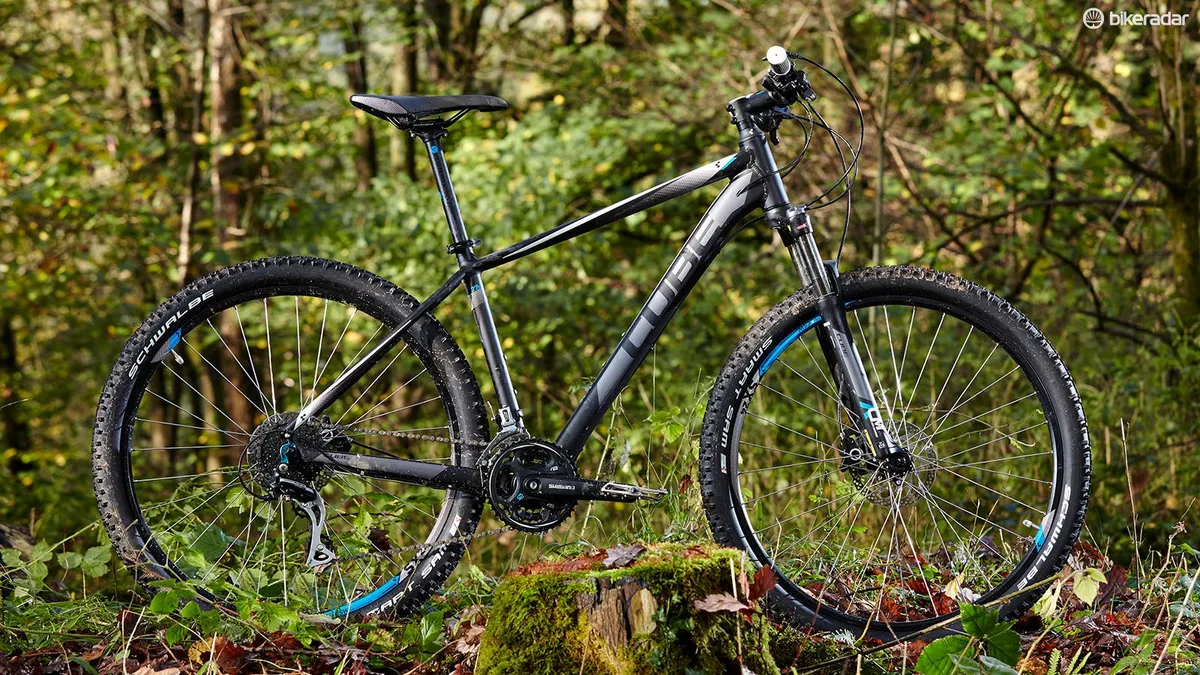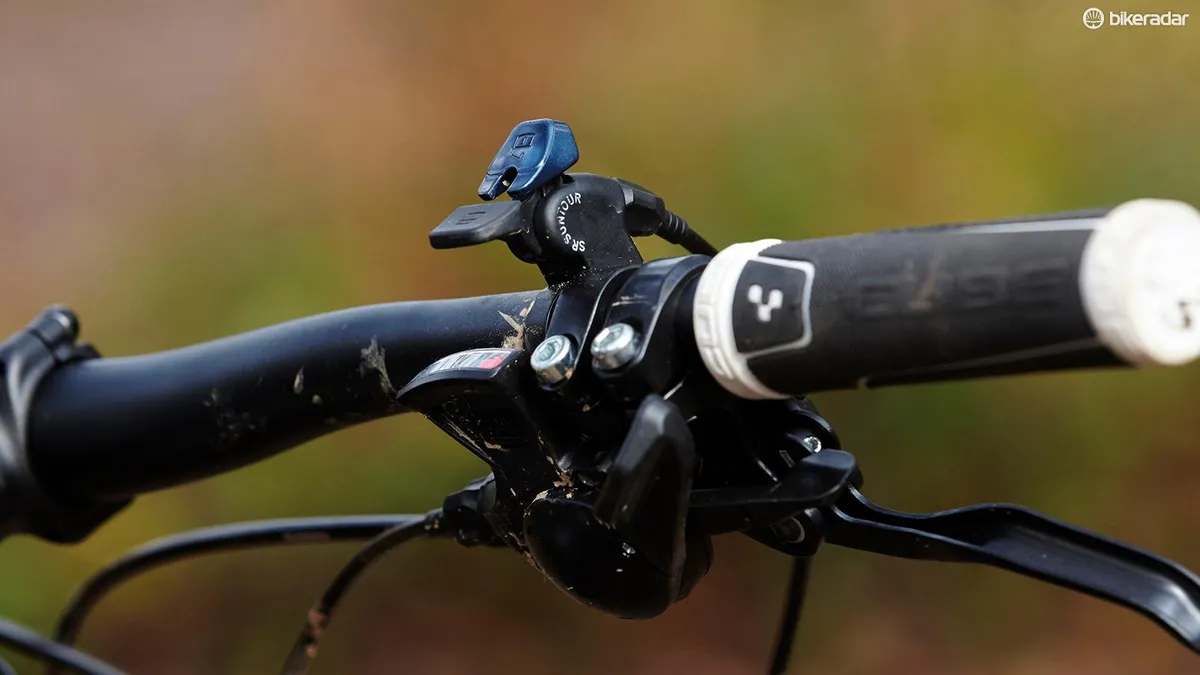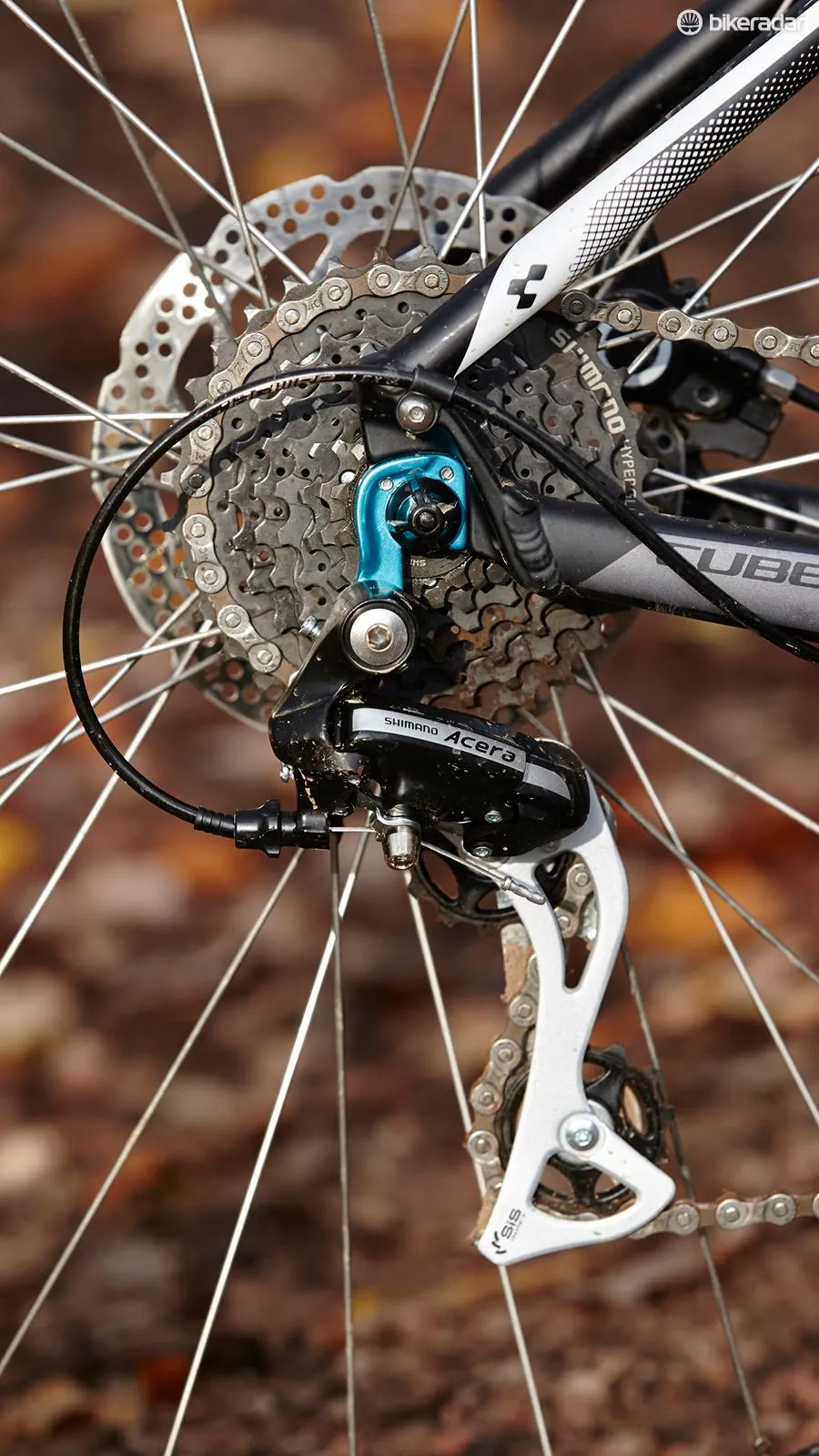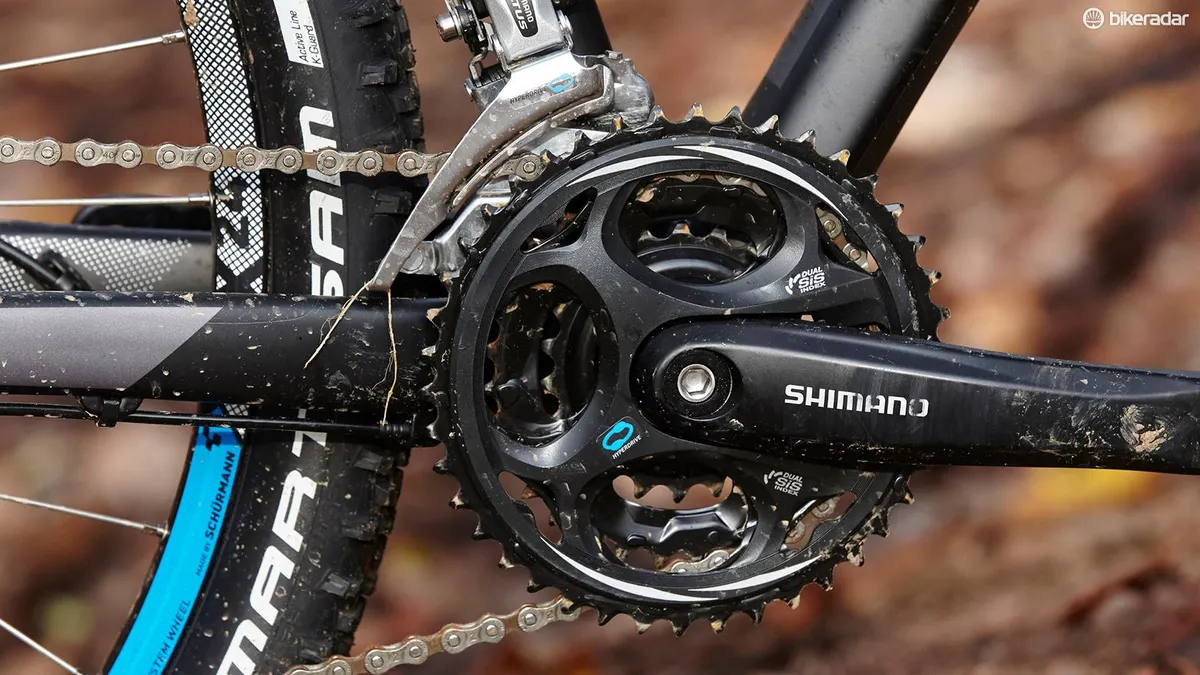Cube offers the Aim SL, the range-topping bike in its entry-level Aim series, in two versions – with 650b (27.5in) wheels, as tested here, or in identical trim but with bigger 29er hoops (and a frame to match, naturally).
The smaller-wheeled bike is available in frame sizes down to 13.5in, making it the best choice for shorter riders, while the 29er looks like the better buy for taller riders, topping out at 23in. At less than £500, is the Aim SL a good buy?
- Highs: Cheaper than much of the competition, and there are some nice frame design touches and reasonable spec
- Lows: Short, high ride position compromises handling, fun factor and speed, and our test sample had worryingly loose fork bushes
Frame and equipment: a good chassis, with some neat touches, but some limiting spec details
At first glance the Cube’s chassis looks as though it belongs to a more expensive bike. The ‘so slim they’re almost anorexic’ seatstays are a breath of fresh air in a part of the market that’s often dominated by oversize everything, while the remainder of the Aim SL frame looks equally out of place on an entry-level machine.
Details such as the inboard rear brake calliper, cleverly arranged internal cable routing and bridgeless chainstays are all borrowed from further up the Cube range. Full-length cable housings bode well for reliable gear shifts whatever the British weather throws at you and rack mounts add to the Aim SL’s versatility, with the lower driveside mount even doubling up as a rear mech cable guide anchor point to prevent the housing from flapping about. That’s a neat touch – and one we’ve never come across before.
Backing up the impression of a trail all-rounder rather than a big hit bruiser is the 100mm (3.9in) travel Suntour XCM fork up front. The remote lockout will earn Cube some spec sheet bragging rights and we used it a couple of times just because it was there, but the lever’s position on top of the handlebar makes it horribly vulnerable to knocks.
Our test bike’s fork also had noticeably loose bushes, to the extent that it rattled and clunked its way down the trail. We expect cheap forks to show some sample variation, but had we paid for this bike, we’d have taken it straight back to the shop for a replacement.
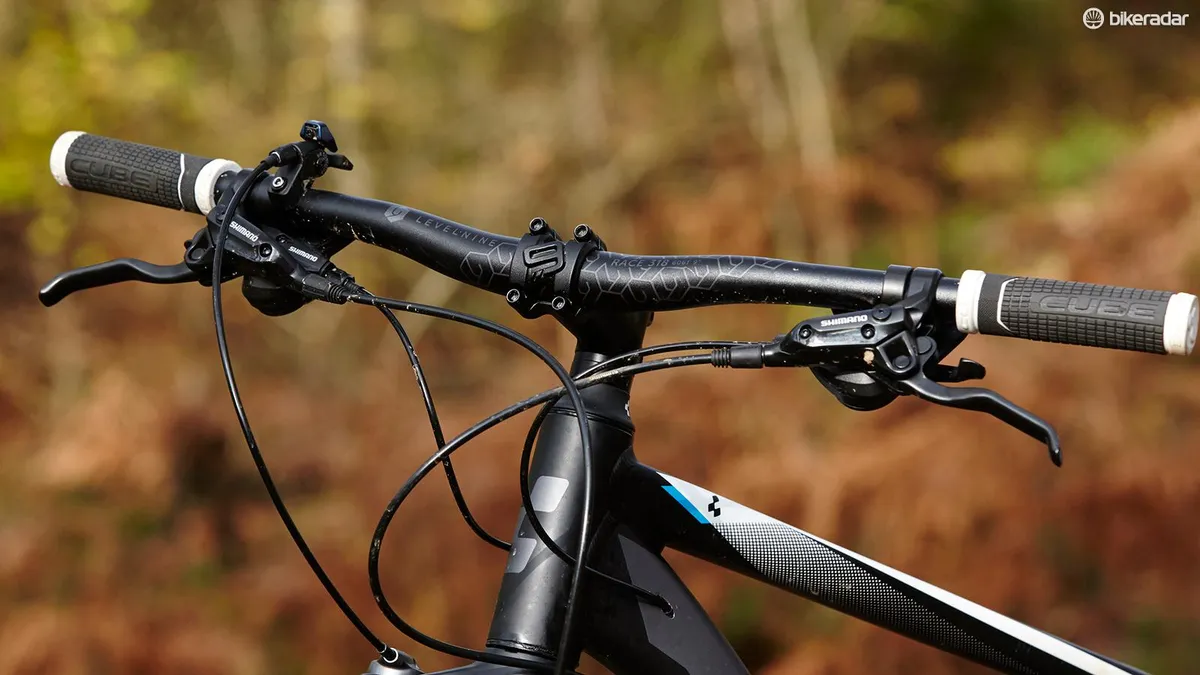
Cube’s designers have gone to town on the Aim SL, adding neat touches like internal cable routing
If it’s all sounding a bit too good to be true so far, you’re not wrong – you don’t get something for nothing in this hard-fought part of the hardtail market. The price to pay for the Aim SL’s competition-busting price ticket is a 24-speed transmission in place of the 27-speed set-up we’d normally expect to see on a £500 bike.
In practice, the 12-32t cassette offers very nearly the same spread of gear ratios as an 11-32t nine-speed transmission. The only obvious downside is the cheap front mech construction, which means it doesn’t deliver quite such clean shifts as the better-equipped competition.
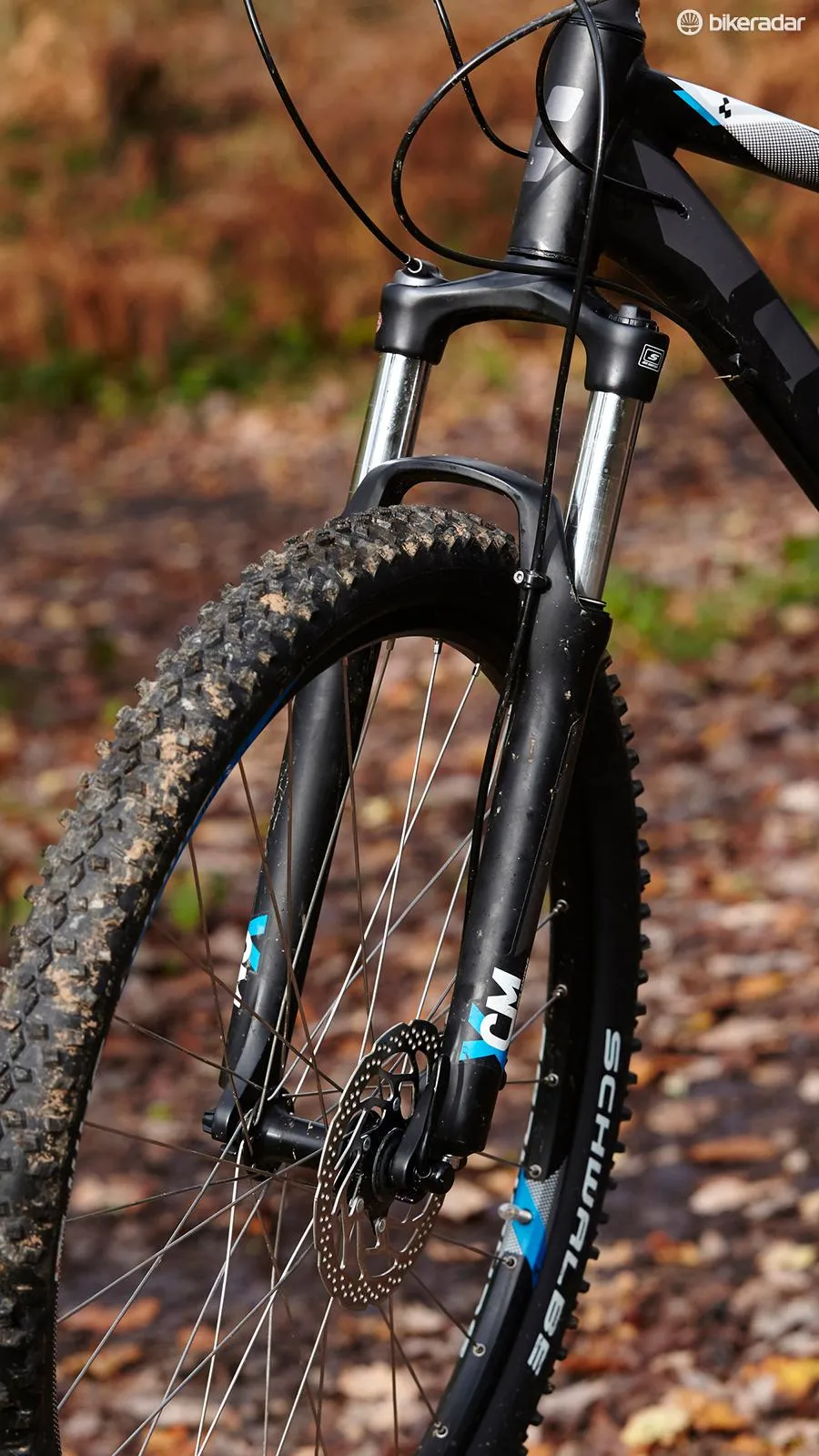
Entry-level forks can vary from sample to sample – our Cube’s fork was noticeably loose and rattly
The Shimano brakes and well-finished own-brand kit look good and work well though, and the Schwalbe treads offer decent grip for the money.
Ride and handling: beginner-friendly geometry, but won't help build a newbie's skills
Despite the high-end inspiration for the frame design, the Aim SL’s geometry is all about pandering to a beginner’s expectations. That means a short rider cockpit and tall front end, putting the handlebar in a position that less experienced riders will take to very quickly.
It’s easy to look around at the view, there’s not a lot of weight over the front end so arms and shoulders have less work to do, and it just feels “normal”. Used in this way on undemanding trails, the Aim SL works fine. But that’s not how we test bikes, because we expect even a beginner machine to be able to allow a new rider’s skills to develop – and it’s here that the Cube comes a little unstuck.
The rearward weight bias and short, high front end make steep climbs a challenge, allowing the front wheel to unweight and wander earlier than we’d like. And, though you’d expect this to be a less of an issue as the speed picks up and the ground levels off, it’s the same weight distribution and reach issues that limit what you can do on fast, flowing trails.
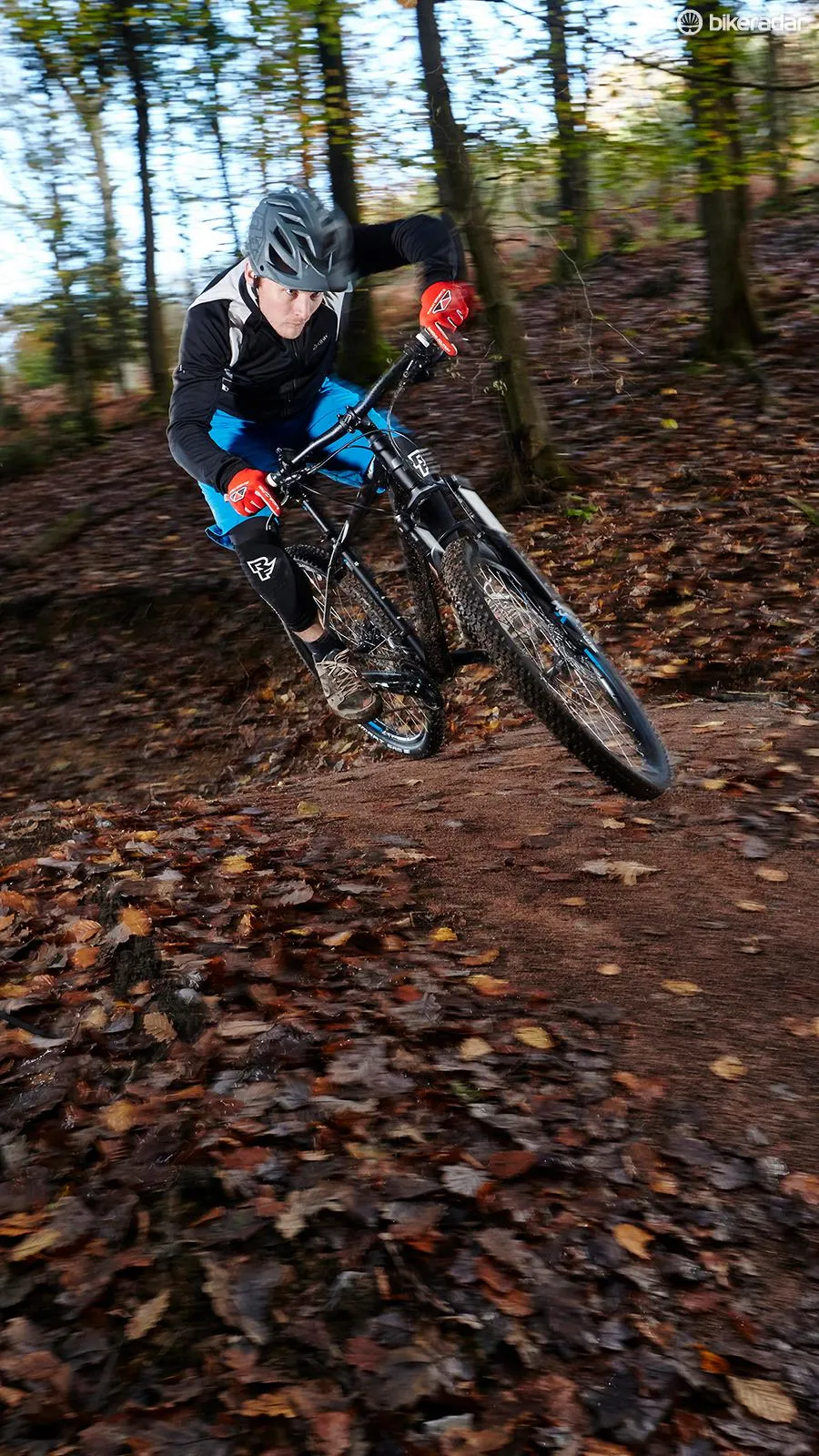
It was on more demanding trails that the Aim SL started to falter
Throw in a rear end that’s harsher than the slender build might suggest and a fork that’s not at its best unless it’s got some weight over it, and the Cube is much harder work to hustle down the trail than you’d expect.
Maybe this all sounds a bit harsh – after all, the Aim SL isn’t even pretending to be a race bike. But compromised handling ultimately affects both the fun factor and your ability to grow your riding skills.
The Cube has the value, the looks and the build quality – dodgy fork sample aside – to make it a contender for your cash, but we think the geometry is too newbie-focused to make it a good buy in the long-term.
This article was originally published in Mountain Biking UK magazine, available on Apple Newsstand and Zinio.
